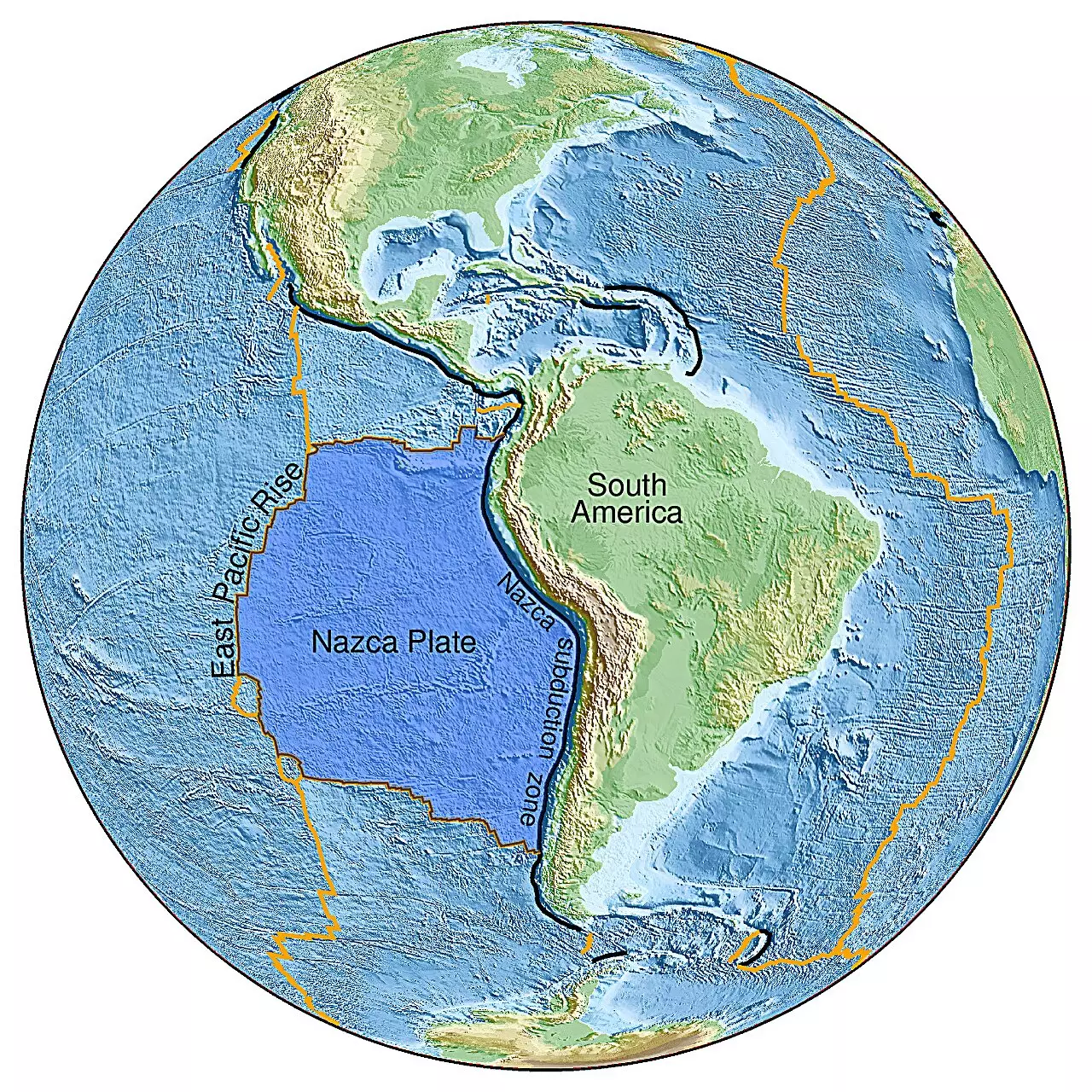Recent investigations conducted by scientists at the University of Maryland have yielded groundbreaking discoveries regarding the Earth’s internal composition. Their research challenges long-standing models of plate tectonics and mantle dynamics by revealing a segment of ancient seafloor submerged deep beneath the Earth’s outer crust. This significant finding emerged from the study of the East Pacific Rise, a tectonic plate boundary located in the southeastern Pacific Ocean, which has remained largely unexplored until now. The results were published in the distinguished journal Science Advances in September 2024.
Under the leadership of geology postdoctoral researcher Jingchuan Wang, the research team employed advanced seismic imaging to delve into the Earth’s mantle, the thick layer sandwiched between the crust and the core. In doing so, they discovered an anomalously thick section within the mantle transition zone, which lies approximately 410 to 660 kilometers below the Earth’s surface. This region is pivotal to our understanding of tectonic activity, as it serves as a boundary that separates the upper and lower mantle, changing characteristics based on thermal conditions.
The team’s breakthrough revolves around the concept of subduction, a geological process where one tectonic plate is forced underneath another, thereby recycling surface materials into the mantle. Traditionally, geologists have analyzed superficial rock samples and sediment deposits to understand this phenomenon. However, the Maryland researchers took a novel approach by examining seismic wave behavior. By closely monitoring how these waves traversed various layers of Earth, they were able to construct intricate models of the hidden geological structures below the ocean floor.
Wang likened their seismic imaging techniques to undergoing a CT scan, which provides a comprehensive cross-sectional view of internal structures. Typically, oceanic slabs—thick sections of the Earth’s crust—are completely consumed during the subduction process, leaving few indicators of their prior existence. However, this research unveiled the remnants of an ancient seafloor that buried itself into the mantle around 250 million years ago, akin to a fossilized fingerprint of past tectonic activities. The emergence of this discovery not only broadens the understanding of deep Earth processes but also hints at an intricate link between these subterranean structures and the geological manifestations observable on the Earth’s surface.
The findings from this research surprised the scientific community by revealing that materials migrating through the mantle are moving at a significantly slower pace than previous models had suggested. Wang’s research posits that the thickened area detected in the transition zone may be filled with relatively colder materials, alluding to the possibility that certain oceanic slabs become trapped midway through their descent. Their analysis indicated that, unexpectedly, material in this specific region sinks at just about half the previously estimated speed.
This nuanced understanding of mantle dynamics not only challenges existing paradigms but also posits that the transition zone might function as a physical barrier that hampers the movement of materials within the Earth. Wang’s insights stimulate a myriad of questions regarding the influence of the Earth’s deep interior on surface geology, potentially extending over extensive geographic areas and over vast timelines.
Looking forward, Wang and his colleagues have ambitious plans to broaden their investigative scope beyond the Pacific Ocean. They aim to create a more expansive mapping of ancient subduction and upwelling zones and further examine how these regions impact both deep and surface geological structures. Utilizing the seismic data gathered from their current research, Wang’s team is refining existing models concerning tectonic plate movements throughout Earth’s geological history.
The implications of these findings are profound. As emphasized by Wang, “This is only the beginning.” The team believes there exist numerous ancient structures yet to be identified within the Earth’s depths. The desire to unearth these hidden geological gems highlights the ongoing quest to deepen humanity’s understanding of the complex interactions that govern our planet’s geology.
The revelations from the University of Maryland’s research exemplify a critical evolution in the field of geology, bridging gaps between ancient Earth processes and modern surface dynamics. By employing innovative techniques to probe beneath the ocean floor, the scientists not only challenge established theories but also lay the groundwork for an enhanced appreciation of Earth’s intricate systems. As further exploration unfolds, the infinite reservoir of knowledge sequestered within the Earth will undoubtedly continue to surprise and enlighten future generations of geoscientists.


Leave a Reply